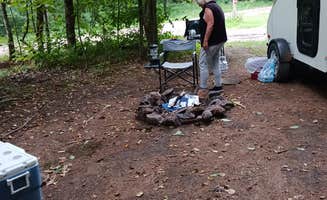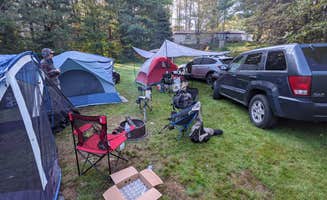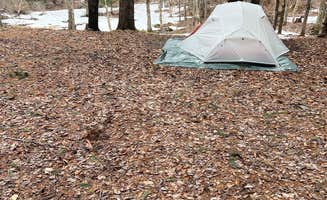Tent campsites near Henderson Harbor, New York range from primitive sites to established campgrounds offering various comfort levels. The area sits near eastern Lake Ontario with limestone geology and mixed hardwood forests. Fall camping provides colorful foliage displays while summer temperatures typically range from 60-80°F with occasional thunderstorms.
What to do
Fishing opportunities: At Stoneys Pineville Campground, campers access prime salmon fishing locations. "We have been out three is consecutively for salmon fishing and I have had a great time what a great place to stay," notes Eric F. The campground serves as a base for fishing enthusiasts during peak salmon runs.
Water activities: Mary Island State Park Campground provides boat-access camping with island isolation. "You can only get to it by boat. How awesome!? Every site is far away from the next and each has its own unique and beautiful view of the water and surrounding islands," reports Matt L. Campers need personal watercraft to access the sites.
Winter recreation: The region transforms during colder months with activities centered around snow sports. The Winona Forest area maintains extensive trail networks for cross-country skiing and snowshoeing when conditions permit. During winter, temperatures frequently drop below freezing with significant snowfall accumulation.
What campers like
Island solitude: Sites at Mary Island State Park Campground offer separation from neighboring campers. The boat-only access limits crowds and creates a quieter camping environment compared to drive-up locations. Each site provides waterfront views with natural barriers between camping areas.
River access: Hall Island State Forest campsites provide views of the Salmon River Reservoir. "There were fire ring set up a view of the water and for enable body person just a short walk up the path," explains Thomas E. Sites include established fire rings and water views within half a mile of parking areas.
Budget-friendly options: Free primitive camping attracts cost-conscious travelers. Winona State Forest sites require no fees and have minimal development. Most primitive sites operate year-round without reservations, though access becomes difficult during winter and spring mud season.
What you should know
Limited facilities: Most primitive sites require complete self-sufficiency. "There's not much to them, no facilities or running water, and certainly not as scenic as going up to the Adirondacks; but seemed a decent option for a quick weekend trip," says Rachel P. about Hall Island State Forest. Many tent sites lack potable water, requiring campers to bring their own supplies.
Site identification challenges: Finding designated camping areas requires attention to markers. At Winona State Forest, "The primitive campsite was a little difficult to find there's a tiny black and yellow placard that shows you where you can camp," according to Thomas E. Limited signage means campers should arrive during daylight hours to locate appropriate sites.
Weather variability: Lake-effect weather patterns influence camping conditions throughout the region. Spring brings frequent rain, while summer provides more stable conditions with temperatures averaging 70-80°F during day and 50-60°F at night. Fall brings colorful foliage but cooler temperatures and increased precipitation.
Tips for camping with families
Consider established campgrounds: For families with young children, locations with basic amenities provide easier camping experiences. Della Terra offers rural camping with solar power availability. "This property is rural and beautiful. There is solar power to provide you with your electrical needs," notes Ashley F.
Plan shower alternatives: Most primitive tent sites lack shower facilities. Some nearby towns offer shower facilities for nominal fees. Hall Island campers report driving to nearby convenience stores that provide shower access for a small charge, typically $3-5 per person.
Pack extra supplies: Limited services near primitive camping areas require advance preparation. Closest supply points often require 15-20 minute drives on rural roads. Prepare for temperature fluctuations by packing layered clothing even during summer months when overnight temperatures can drop significantly.
Tips from RVers
Winter basecamp options: Winona Forest CCC Camp accommodates small recreational vehicles during multiple seasons. "I took my small RV here on its maiden voyage. I found this spot on Google maps just pouring over imagery. I pulled to the back and parked out of the way," reports Quade S. The location includes an outhouse and porta-potty but no hookups.
Supply planning: Small RVs work best in the area's more primitive locations. "If you camp here, you need to be self sufficient as there is no running water or electricity. There is a dollar general about 15 minutes away if you need some supplies," adds Quade S. Most locations lack dumping stations, requiring self-contained waste management.
Road access considerations: Many forest roads leading to primitive sites have variable conditions depending on recent weather. Spring thaws create muddy access points that may challenge larger vehicles. Late summer through early fall typically provides the most reliable road conditions for RV travel to remote sites.




